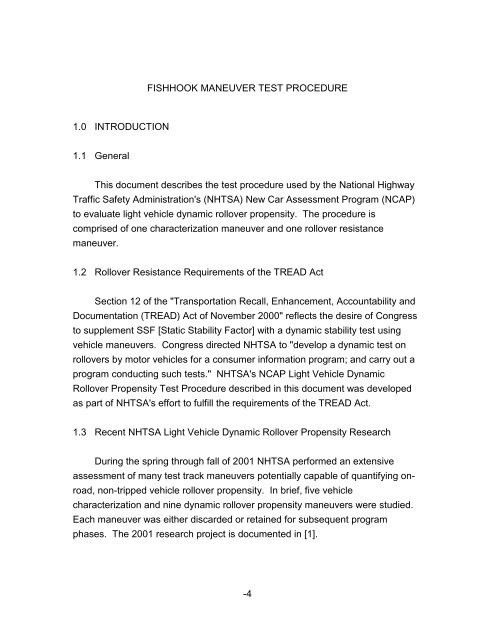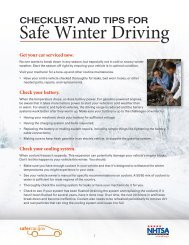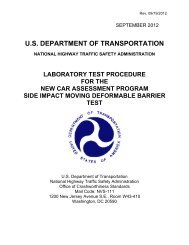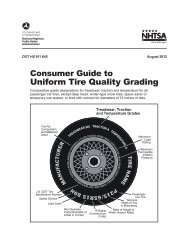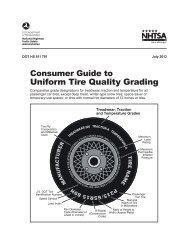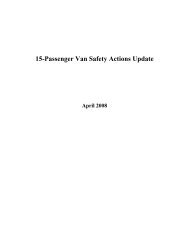Fishhook Maneuver Test Procedure - SaferCar.gov
Fishhook Maneuver Test Procedure - SaferCar.gov
Fishhook Maneuver Test Procedure - SaferCar.gov
Create successful ePaper yourself
Turn your PDF publications into a flip-book with our unique Google optimized e-Paper software.
FISHHOOK MANEUVER TEST PROCEDURE<br />
1.0 INTRODUCTION<br />
1.1 General<br />
This document describes the test procedure used by the National Highway<br />
Traffic Safety Administration's (NHTSA) New Car Assessment Program (NCAP)<br />
to evaluate light vehicle dynamic rollover propensity. The procedure is<br />
comprised of one characterization maneuver and one rollover resistance<br />
maneuver.<br />
1.2 Rollover Resistance Requirements of the TREAD Act<br />
Section 12 of the "Transportation Recall, Enhancement, Accountability and<br />
Documentation (TREAD) Act of November 2000" reflects the desire of Congress<br />
to supplement SSF [Static Stability Factor] with a dynamic stability test using<br />
vehicle maneuvers. Congress directed NHTSA to "develop a dynamic test on<br />
rollovers by motor vehicles for a consumer information program; and carry out a<br />
program conducting such tests." NHTSA's NCAP Light Vehicle Dynamic<br />
Rollover Propensity <strong>Test</strong> <strong>Procedure</strong> described in this document was developed<br />
as part of NHTSA's effort to fulfill the requirements of the TREAD Act.<br />
1.3 Recent NHTSA Light Vehicle Dynamic Rollover Propensity Research<br />
During the spring through fall of 2001 NHTSA performed an extensive<br />
assessment of many test track maneuvers potentially capable of quantifying onroad,<br />
non-tripped vehicle rollover propensity. In brief, five vehicle<br />
characterization and nine dynamic rollover propensity maneuvers were studied.<br />
Each maneuver was either discarded or retained for subsequent program<br />
phases. The 2001 research project is documented in [1].<br />
-4


